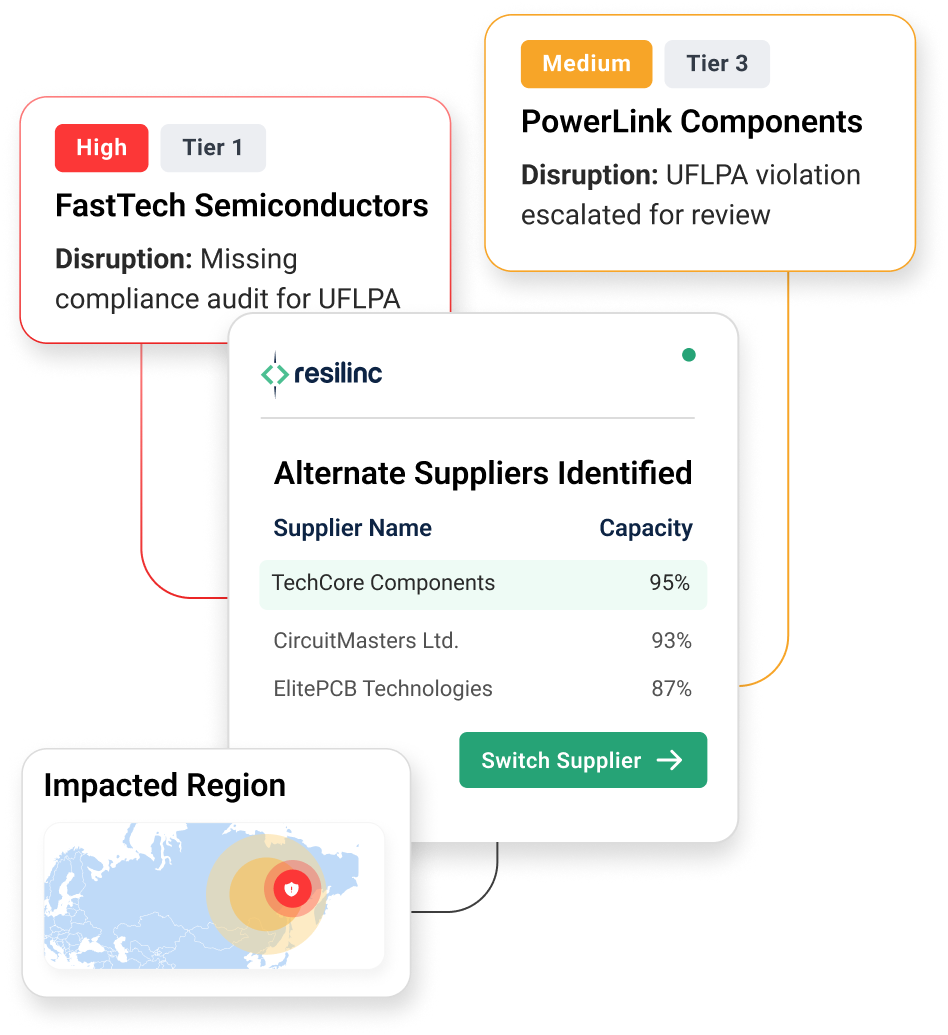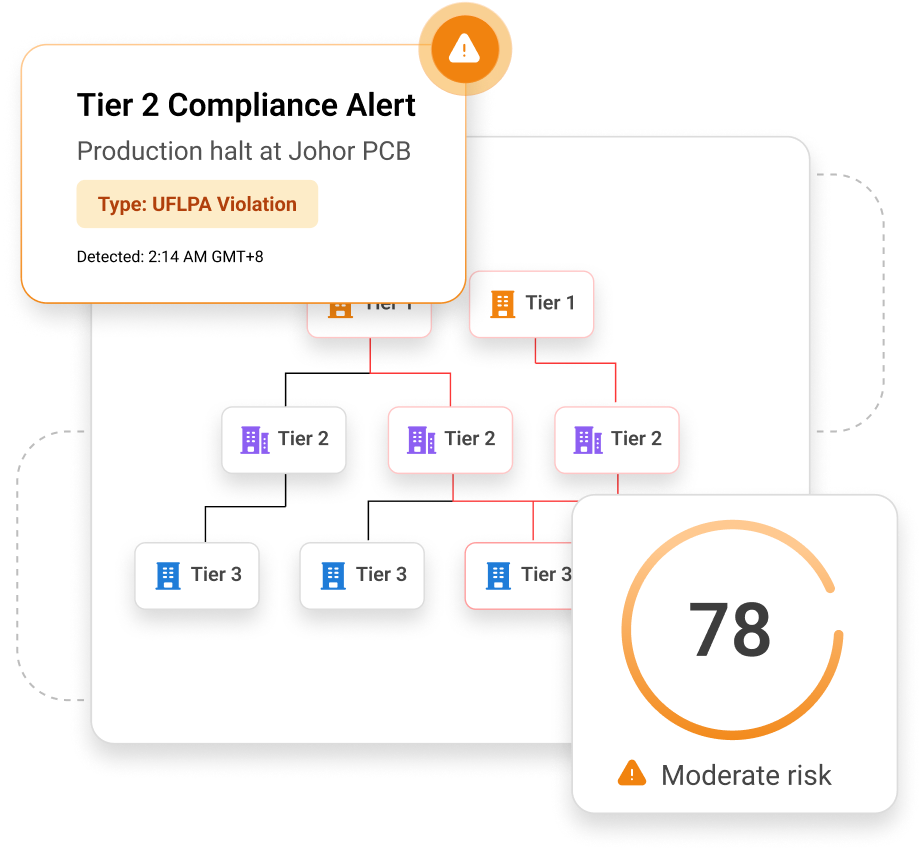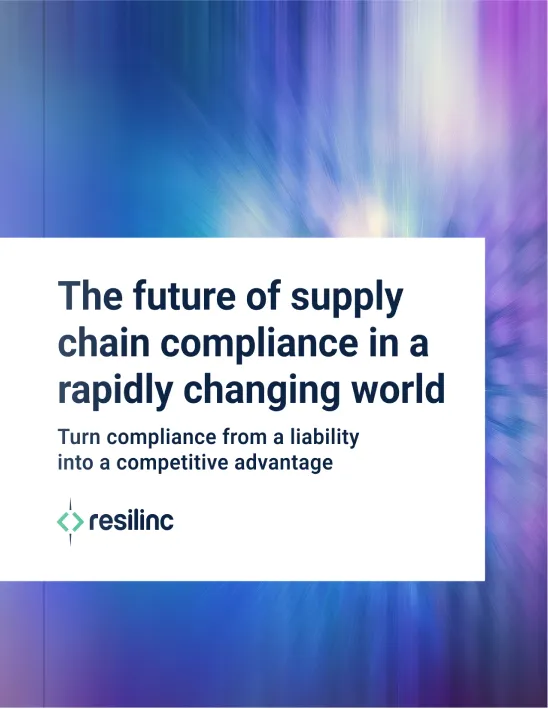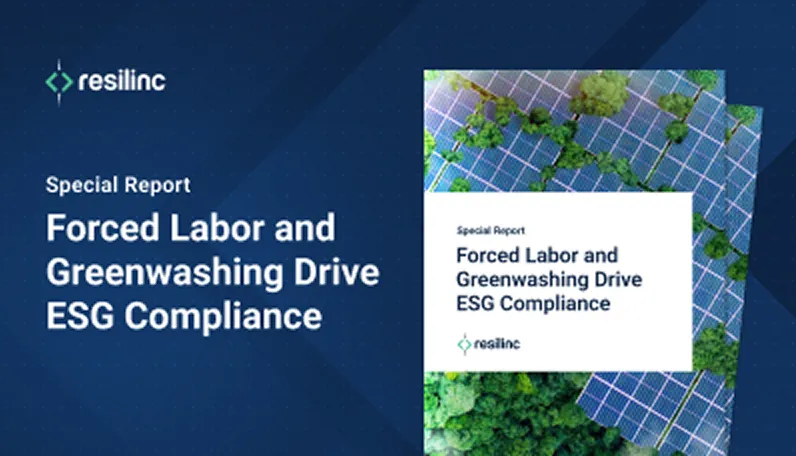What is supply chain compliance risk?
The traditional approach
Why traditional compliance workflows fail
The modern approach
How proactive compliance strategies get results
Evaluating the data
Compliance-related supply chain disruptions are rising fast
YoY increase in compliance-related alerts (EventWatchAI, H1 2024 to H1 2025)
countries enforcing supply chain and due diligence laws worldwide in 2025
aerospace and defense supply chain disruption alerts in H1 2025
Industry snapshot
Top supply chain compliance challenges by industry
From traceability mandates to forced labor laws, industry-specific compliance gaps are triggering audits, penalties, and supply chain disruptions in 2025. Leading organizations are turning to supply chain compliance software to address these evolving challenges and maintain visibility across every tier.
1. Life sciences
EtO sterilization scrutiny and FDA traceability mandates are exposing tier-2 visibility gaps that trigger regulatory investigations and production shutdowns.
2. Food and beverage
ESG labeling laws, HFSS marketing restrictions, and deforestation sourcing rules demand documented proof of ingredient origins—or face fines and lost market access.
3. High tech
CHIPS Act compliance and forced labor audits are forcing companies to prove component origins or lose access to critical technologies and contracts.
4. Automotive and aerospace
UFLPA enforcement, origin tracing requirements, and geopolitical tensions are disrupting production when tier-3 compliance gaps surface during customer audits.
Knowing the cost
How much can non-compliance cost?
worth of merchandise detained for potential UFLPA violations in 2024
in total cost of non-compliance per incident when including fines, penalties, revenue loss and more
in global regulatory fines in 2024
Assessing risk
What are the main types of compliance risk?
1. Forced labor and human rights
Regulations like UFLPA and the EU's CSDDD require documented proof that no part of your supply chain is linked to forced labor—even several tiers deep. A single undetected connection can result in border detentions, lost contracts with major customers, and reputational damage that takes years to rebuild.
2. Trade compliance and sanctions
Tariff structures shift with policy announcements and restriction lists update with little warning. Companies that can't quickly identify affected suppliers, parts, or materials face shipment delays, unexpected costs, and potential violations that trigger government penalties.
3. Environmental and sustainability
Environmental and sustainability regulations vary dramatically by region, industry, and product—creating a compliance maze where acceptable components in one market trigger violations in another. The risk isn't just fines—it's being locked out of key markets or losing customers who demand verified practices.
4. Product safety and quality standards
Product safety failures create immediate liability—recalls costing millions, lawsuits, and brand damage that can destroy companies. When tier-2 or tier-3 suppliers cut corners or falsify certifications, the legal and financial consequences fall on your brand.
Understanding the benefits
The benefits of supply chain compliance software
Reducing risk
Best strategies to minimize compliance risk
Step 1
Map your network beyond tier 1
Most companies have visibility only into their direct suppliers, leaving deep-tier risks hidden across complex global networks. With a clear picture of every site and relationship, compliance teams can act before issues spread.
- Resilinc’s supplier-validated Multi-tier Mapping™ reveals verified site-level connections across every tier.

Step 2
Identify high-risk regulations
As global trade, ESG, and labor laws evolve rapidly, compliance exposure now varies dramatically by region and industry. Knowing where you’re most vulnerable helps prioritize limited resources effectively.
- Resilinc’s AI-powered platform identifies and ranks regulatory risks by geography, material, and sector.

Step 3
Automate with Agentic AI
- Resilinc’s AI agents are designed to identify, respond to, and resolve specific risk and compliance scenarios.
Step 4
Unify compliance stack
When compliance tools and teams operate in silos, critical insights get lost and response times lag. Integrating supply chain compliance software creates a single source of truth that enables faster, more confident decision-making.
- Resilinc’s UFLPA Agent ensures supply chain compliance with always-on AI monitoring that detects forced labor risk, automates supplier due diligence, and accelerates shipment clearance.

Step 5
Operationalize audits
Regulators and customers now expect traceable, on-demand proof of compliance across the entire supply chain. Building audit readiness into daily operations transforms supplier compliance monitoring from reactive to routine.
- Resilinc delivers audit playbooks, real-time dashboards, and mobile escalation workflows for continuous readiness.
AI offerings
Agentic supply chain risk solutions
SC Watch
Foundational
Start with intelligent risk detection—powered by AI agents monitoring over 100M+ sources for real-time alerts and impact insights.
SC Monitor
Core
Advance to proactive risk management with predictive intelligence, tiered supplier mapping, and built-in disruption agent capabilities.
SC Command
Enterprise
Unlock full-spectrum control with enterprise-wide visibility, multi-tier simulations, and advanced scenario planning to drive resilient global operations.
Tariffs Agent
Track, assess, and respond to tariff and trade risks with smart, context-aware automation.
UFLPA Agent
Stay ahead of forced labor enforcement with AI-powered supplier screening and compliance.
Disruption Agent
Act faster with an intelligent agent that detects, prioritizes, and guides your disruption response.
Whitepaper
The future of supply chain compliance in a rapidly changing world
Learn how advanced compliance tracking and AI-powered visibility help you identify risks beyond tier 1, automate audit readiness, and maintain trust—so you can avoid fines, prevent detentions, and protect your brand.




